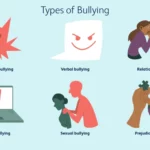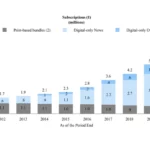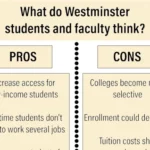If you’re a teacher looking for ways to enhance your classroom experience, look no further than The New York Times. With its extensive coverage of world events and engaging crossword puzzles, a subscription to NYT can enrich your students’ education. But with tight budgets and limited resources, finding affordable and high-quality materials can be a challenge. That’s where the NYT student discount comes in. This discount allows eligible students and teachers to access the digital version of the newspaper at a reduced rate. In this article, we’ll explore the benefits of the NYT student discount for teachers and show you how to incorporate this valuable resource into your lesson plans.
Contents
- What is the NYT Student Discount?
- Who is Eligible for the Discount?
- How to Get the Discount
- FAQs About the NYT Student Discount
- Does the NYT student discount at any time expire?
- Benefits of the NYT Student Discount for Teachers
- Support Student Learning and Critical Thinking
- How Teachers Can Incorporate the NYT into Their Lesson Plans
- Language Arts and Literacy
- Conclusion
-
Frequently Asked Questions
- What is the cancellation policy for the NYT student discount?
- Can I share my NYT student discount with others?
- Is the NYT student discount available to international students?
- Can I use my NYT student discount on all devices?
- What happens when my student discount subscription ends?
- Can I get a refund if I forget to cancel my subscription?
- What happens if I have trouble accessing my subscription?
- Is there a limit to how many articles I can access with my student discount?
- Can I use my student discount for group subscriptions?
- Can I use my student discount for print subscriptions?
- References
What is the NYT Student Discount?
The New York Times student discount is a special offer that allows students and educators to access the digital version of the newspaper at a significantly reduced price. With the discount, students can subscribe to the New York Times for as low as $1 a week, which is a significant savings from the regular price. This offer is available to all students who are currently enrolled at a degree-granting college or university, as well as K-12 teachers in the United States. The digital subscription includes unlimited access to articles, videos, podcasts, and archives, making it a valuable resource for anyone who wants to stay informed about current events. The discount is available for a limited time only, so students and teachers should take advantage of it while they can.
Who is Eligible for the Discount?
The NYT Student Discount is available to all students who are currently enrolled in an accredited college or university. This includes both undergraduate and graduate students, as well as those pursuing professional degrees. Additionally, students who are in a K-12 program are also eligible for the discount. However, they need to be at least 13 years old to sign up for the subscription. In order to qualify for the discount, students must provide proof of enrollment, such as a school email address or a transcript. Once verified, students can enjoy unlimited access to the New York Times website and mobile app at a discounted rate. Please note that the discount is only available to new subscribers and cannot be combined with any other offers.
How to Get the Discount
To get the NYT student discount, you need to sign up for a basic subscription through the NYT’s website. Once you’re on the website, click on the “subscribe” button, and then select the student option. You’ll be prompted to enter your school email address to verify your eligibility for the discount. If you’re not able to verify your student status with your school email, you can also provide other documentation such as a transcript or student ID.
It’s important to note that the discount is only available for new subscribers and cannot be combined with other offers. Once you’ve signed up, you’ll have access to the NYT’s digital content, including articles, videos, and podcasts. You’ll also be able to download the NYT app on your mobile device for easy access to the latest news and updates.
If you have any issues signing up for the discount, you can contact the NYT’s customer support team for assistance. They’ll be happy to help you with any questions or concerns you may have about the discount or your subscription.
Don’t forget to take advantage of other student discounts as well, such as discounts on travel, entertainment, and electronics. Check out sites like ID.me to find even more great deals.
FAQs About the NYT Student Discount
FAQs About the NYT Student Discount: The New York Times student discount is available to all currently enrolled college and university students. The discount allows students to receive up to 50% off a basic digital subscription. The discount is also available to K-12 teachers and faculty members who work at accredited institutions. To receive the discount, students and faculty members must verify their eligibility through ID.me, a third-party verification service. The discount does not expire and can be renewed annually as long as the student or faculty member remains eligible.
Does the NYT student discount at any time expire?
As of the time of writing, there is no expiration date for the NYT student discount. Once you have successfully signed up for the discount, it will remain valid for as long as you continue to meet the eligibility requirements. It is important to note, however, that the New York Times reserves the right to modify or cancel the discount program at any time, so it is always a good idea to check the website for the latest information.
If you have any questions or concerns about the status of your student discount, you can always contact the New York Times customer service team for assistance.
Benefits of the NYT Student Discount for Teachers

The New York Times is a great resource for teachers to use in their classrooms. With the NYT student discount, teachers can access high-quality news and information for their students at a discounted price. Here are some of the benefits of the NYT student discount for teachers:
| Save Money on Classroom Materials | Teachers are always looking for ways to save money on classroom materials. The NYT student discount can help with that. With the discount, teachers can get up to 50% off basic subscriptions. This means they can get access to the news and information they need for their students at a lower cost. |
| Access to High-Quality News and Information | The New York Times is known for its high-quality news and information. With the NYT student discount, teachers can access this information for their students. This can help students stay informed about current events and learn about topics that are relevant to their lives. |
| Support Student Learning and Critical Thinking | The NYT student discount can help support student learning and critical thinking. By providing access to high-quality news and information, teachers can help their students develop critical thinking skills and learn more about the world around them. This can help students become more engaged and informed citizens. |
The NYT student discount is a great resource for teachers. It can help them save money on classroom materials, provide access to high-quality news and information, and support student learning and critical thinking.
If you’re looking for other teacher discounts, be sure to check out our comprehensive list. You can find discounts on everything from theme parks to rental cars. Some of our most popular discounts include:
- Six Flags Over Texas Discount Tickets
- Military Rental Car Discounts
- Teacher Discounts in Florida
- Marriott Teacher Discount
- San Diego Zoo AAA Discount
- San Diego Safari Park Discount
- Avis Rental Cars Coupon Codes
- Six Flags Promotional
- San Diego Zoo Coupon
Save Money on Classroom Materials
As a teacher, you know how quickly classroom expenses can add up. With the NYT student discount, you can save money on classroom materials and resources. Instead of spending a large portion of your budget on newspapers and online subscriptions, you can use the money for other important classroom needs. The discount allows you to get up to 50% off a basic subscription, which includes unlimited access to articles, podcasts, and videos. You can also receive discounts on other products, such as books and educational materials. Here are some ways you can save money on classroom materials with the NYT student discount:
- Use NYT articles as reading material for your students instead of purchasing expensive textbooks.
- Assign articles for homework or in-class discussions instead of purchasing costly study guides or workbooks.
- Access free educational resources provided by The New York Times Learning Network, such as lesson plans, writing prompts, and quizzes.
By taking advantage of the NYT student discount, you can save money on classroom materials and provide your students with high-quality news and information. This can help you create a more engaging and enriching learning environment without breaking the bank.
Access to High-Quality News and Information
As a teacher, having access to high-quality news and information is essential for staying informed and keeping your students engaged. With the NYT student discount, you can provide your students with access to one of the most respected and trusted news sources in the world. The New York Times is known for its in-depth reporting, investigative journalism, and thoughtful analysis of current events. By incorporating articles and editorials from the NYT into your lesson plans, you can help your students develop critical thinking skills and a deeper understanding of the world around them.
Some of the benefits of using the NYT in your classroom include:
- Exposure to Diverse Perspectives: The NYT covers a wide range of topics from different viewpoints, allowing students to explore a variety of perspectives and develop a more nuanced understanding of complex issues.
- Engaging and Relevant Content: The NYT covers topics that are relevant to students’ lives, making it easier to connect classroom learning to real-world issues and events.
- Opportunities for Discussion and Debate: The NYT provides plenty of material for classroom discussions and debates, helping students develop their communication and critical thinking skills.
By subscribing to the NYT with the student discount, you can access all of these benefits and more. Whether you’re teaching language arts, social studies, science, or any other subject, the NYT provides a wealth of resources to support your teaching and engage your students.
Support Student Learning and Critical Thinking
Support Student Learning and Critical Thinking

As a teacher, you know that developing critical thinking skills is a vital part of your students’ education. With the NYT student discount, you can give your students access to high-quality news and information that encourages them to think critically about the world around them.
The New York Times is known for its in-depth reporting on a wide range of topics, from politics and world events to science and technology. By incorporating NYT articles into your lesson plans, you can help your students build their knowledge base and develop their analytical skills.
One way to support student learning and critical thinking is to use NYT articles as a starting point for classroom discussions. You can ask your students to read an article and then lead a discussion about the topic. Encourage your students to share their opinions and perspectives, and challenge them to back up their arguments with evidence from the article.
Another way to use the NYT in your classroom is to assign articles for independent reading. You can ask your students to choose an article that interests them and then write a short summary and analysis of the article. This can help your students build their reading comprehension skills and learn how to analyze and interpret information.
Finally, you can use the NYT to help your students develop their research skills. The NYT offers a wide range of articles and resources on a variety of topics, making it a great source for research projects. You can ask your students to choose a topic and then use the NYT to find articles and information to support their research.
| Benefits of Using the NYT for Student Learning and Critical Thinking |
|---|
| 1. Access to high-quality news and information – The NYT is known for its in-depth reporting and analysis, making it a great source of information for students. |
| 2. Encourages critical thinking – By using NYT articles in the classroom, you can help your students develop their analytical skills and learn how to think critically about the world around them. |
| 3. Builds knowledge base – The NYT covers a wide range of topics, from politics and world events to science and technology, helping your students build their knowledge base. |
| 4. Develops research skills – The NYT offers a wealth of articles and resources on a variety of topics, making it a great source for research projects. |
How Teachers Can Incorporate the NYT into Their Lesson Plans

Current Events and News Analysis: The New York Times is a great resource for current events and news analysis. Encourage your students to read articles on topics that interest them and then lead a class discussion on the issues presented. This can help students develop critical thinking skills and become more informed about the world around them.
History and Social Studies: The NYT has a rich archive of articles on historical events and figures. Use these articles to supplement your lesson plans on history and social studies. You can also have students research and write about a specific event or figure, using NYT articles as sources.
Language Arts and Literacy: The NYT is known for its excellent writing and reporting. Use articles from the newspaper to teach your students about writing and journalism. You can have them analyze the structure of news articles, practice writing their own articles, or even start a class newspaper.
Science and Technology: The NYT covers a wide range of topics related to science and technology. Use these articles to supplement your lesson plans on these subjects. You can also have students research and write about a specific scientific discovery or technology, using NYT articles as sources.
By incorporating the NYT into your lesson plans, you can help your students develop critical thinking skills, become more informed about the world around them, and improve their reading and writing abilities. Don’t be afraid to get creative and think outside the box when it comes to using the NYT in your classroom.
Current Events and News Analysis
The New York Times is a top source for current events and news analysis, with reporters covering everything from politics and economics to science and technology. Teachers can use this content to help students understand the world around them and develop critical thinking skills.
One way to incorporate current events into lesson plans is to assign students to read and analyze news articles. Teachers can provide guiding questions to help students identify key points, analyze bias and perspective, and draw connections to other topics they are studying. Another approach is to have students create their own news articles or opinion pieces based on current events, using the Times as a model for style and structure.
In addition to traditional news articles, the Times offers a range of multimedia content that can be used for current events and news analysis. For example, teachers can use short videos or podcasts to spark class discussions or assign interactive graphics and data visualizations for students to explore on their own. The Times also offers live events and webinars that can be used to engage students in real-time discussions about current events.
By incorporating current events and news analysis into their lesson plans, teachers can help students develop a deeper understanding of the world around them and become more engaged and informed citizens.
The New York Times is a valuable resource for history and social studies teachers. With its extensive coverage of current events and in-depth reporting on historical topics, the newspaper can help students understand the world around them and the events that have shaped it.
Teachers can use the NYT to supplement their curriculum and engage students in critical thinking and analysis. The newspaper’s coverage of historical events and their impact on the present can help students develop a deeper understanding of the past and its relevance to the present.
The NYT offers a wealth of resources for teaching about current events and social issues. Teachers can use the newspaper’s reporting on topics such as immigration, race relations, and economic inequality to spark classroom discussions and encourage students to think critically about the world around them.
The NYT also offers a range of multimedia resources for history and social studies teachers, including videos, podcasts, and interactive graphics. These resources can help students visualize complex historical events and understand the connections between past and present.
The NYT is an essential tool for history and social studies teachers looking to engage their students in current events and historical analysis. By incorporating the newspaper into their lesson plans, teachers can help students develop critical thinking skills and a deeper understanding of the world around them.
Language Arts and Literacy
Language Arts and Literacy
The New York Times offers a wealth of content that can be incorporated into language arts and literacy lessons. By using articles, opinion pieces, and other resources from the newspaper, teachers can help students develop their reading, writing, and critical thinking skills. Here are some ideas for how to use the NYT in your language arts and literacy lessons:
Reading Comprehension
The New York Times is an excellent resource for improving reading comprehension skills. Teachers can assign articles from the newspaper and have students read them, then answer questions about the content. Teachers can also use the “Reading & Literature” section of the NYT’s resources for teaching English language arts to find articles that are specifically geared toward improving reading comprehension.
Vocabulary
The NYT is also a great source for expanding students’ vocabularies. Teachers can use the “Picture Prompts” section to have students write short stories or essays that incorporate new vocabulary words. Additionally, the “Spread the Word” contest, which challenges students to create short videos that define and illustrate new words, can be a fun and engaging way to teach vocabulary.
Writing
The NYT can be used to teach a variety of writing skills, including persuasive writing, opinion writing, and journalistic writing. Teachers can assign opinion pieces from the newspaper and have students write their own responses, or use the “Student Letters to the Editor” section to have students write letters to the NYT in response to articles they’ve read. The “Journalism” section of the NYT’s resources for teaching English language arts can also be a valuable tool for teaching journalistic writing.
Media Literacy
The NYT is a reputable source of news and information, and using it in the classroom can help students develop media literacy skills. Teachers can use articles from the newspaper to teach students how to evaluate sources, fact-check information, and think critically about the news. The NYT’s resources for teaching English language arts also includes a section on “News Literacy,” which provides lesson plans and activities for teaching these skills.
Incorporating the NYT into language arts and literacy lessons can help students develop a wide range of skills, from reading comprehension to media literacy. By using articles, opinion pieces, and other resources from the newspaper, teachers can provide students with engaging and relevant content that will help them become better readers, writers, and critical thinkers.
Science and Technology
The New York Times is an excellent resource for science and technology news and information that teachers can use to enhance their lesson plans. With the NYT student discount, teachers can access a range of articles and multimedia content covering topics such as space exploration, artificial intelligence, and environmental issues. One way to incorporate the NYT into science classes is to assign articles on current scientific research and discoveries. Students can then discuss the implications of these findings and how they relate to their own lives. Additionally, the NYT’s Science section offers interactive features, such as virtual reality experiences and data visualizations, that can help students better understand complex scientific concepts. Teachers can also use the NYT to teach media literacy skills by having students analyze and evaluate the credibility of science-related news stories. The NYT’s coverage of science and technology provides a wealth of information and resources for teachers looking to enhance their students’ understanding of these important topics.
Conclusion
As a teacher, incorporating The New York Times into your lesson plans can have numerous benefits for your students. Not only can you save money on classroom materials with the NYT student discount, but you can also provide your students with access to high-quality news and information. By using NYT content, you can support student learning and critical thinking.
To incorporate the NYT into your lesson plans, consider using it for current events and news analysis, history and social studies, language arts and literacy, and science and technology. By doing so, you can help your students develop important skills while also keeping them informed and engaged in the world around them.
Encourage your students to stay informed and engaged by subscribing to The New York Times today. With the NYT student discount, it’s more affordable than ever to provide your students with access to one of the world’s most respected newspapers.
Encourage Your Students to Stay Informed and Engaged
Encouraging students to stay informed and engaged is essential for their intellectual growth and development. By incorporating The New York Times (NYT) into your lesson plans, you can provide your students with access to high-quality news and information that can help them stay up-to-date on current events and develop critical thinking skills.
With the NYT student discount, teachers can save money on classroom materials while providing their students with a valuable resource that can help them succeed in their studies. By subscribing to the NYT, you can also help your students develop their language arts and literacy skills, as well as their knowledge of history, social studies, science, and technology.
To encourage your students to stay informed and engaged, you can assign weekly readings from the NYT and ask them to summarize the articles or write their opinions on the topics discussed. You can also use the NYT to teach your students how to analyze news articles and identify bias in the media.
Additionally, you can incorporate the NYT into your lesson plans by using it as a source for research projects or as a way to teach your students about different cultures and societies around the world. By incorporating the NYT into your lesson plans, you can help your students develop a deeper understanding of the world around them and become more informed and engaged citizens.
The NYT student discount is a valuable resource for teachers looking to incorporate high-quality news and information into their lesson plans. By encouraging your students to stay informed and engaged, you can help them develop critical thinking skills and become more knowledgeable about the world around them. So, subscribe to the NYT today and start inspiring your students with new, adaptable content.
Frequently Asked Questions
What is the cancellation policy for the NYT student discount?
You can cancel your subscription at any time, but you will not receive a refund for any unused portion of your subscription.
No, your subscription is only for personal use and cannot be shared with others.
Is the NYT student discount available to international students?
Yes, the discount is available to all students, regardless of their location.
Can I use my NYT student discount on all devices?
Yes, you can access your subscription on any device, including desktop, mobile, and tablet.
What happens when my student discount subscription ends?
Your subscription will automatically renew at the regular rate unless you cancel your subscription.
Can I get a refund if I forget to cancel my subscription?
No, refunds are not available for forgotten cancellations.
What happens if I have trouble accessing my subscription?
You can contact customer service for assistance with any technical issues or problems with your subscription.
Is there a limit to how many articles I can access with my student discount?
No, you have unlimited access to all articles and content with your subscription.
Can I use my student discount for group subscriptions?
No, the student discount is only available for individual subscriptions.
Can I use my student discount for print subscriptions?
No, the student discount is only available for digital subscriptions.






